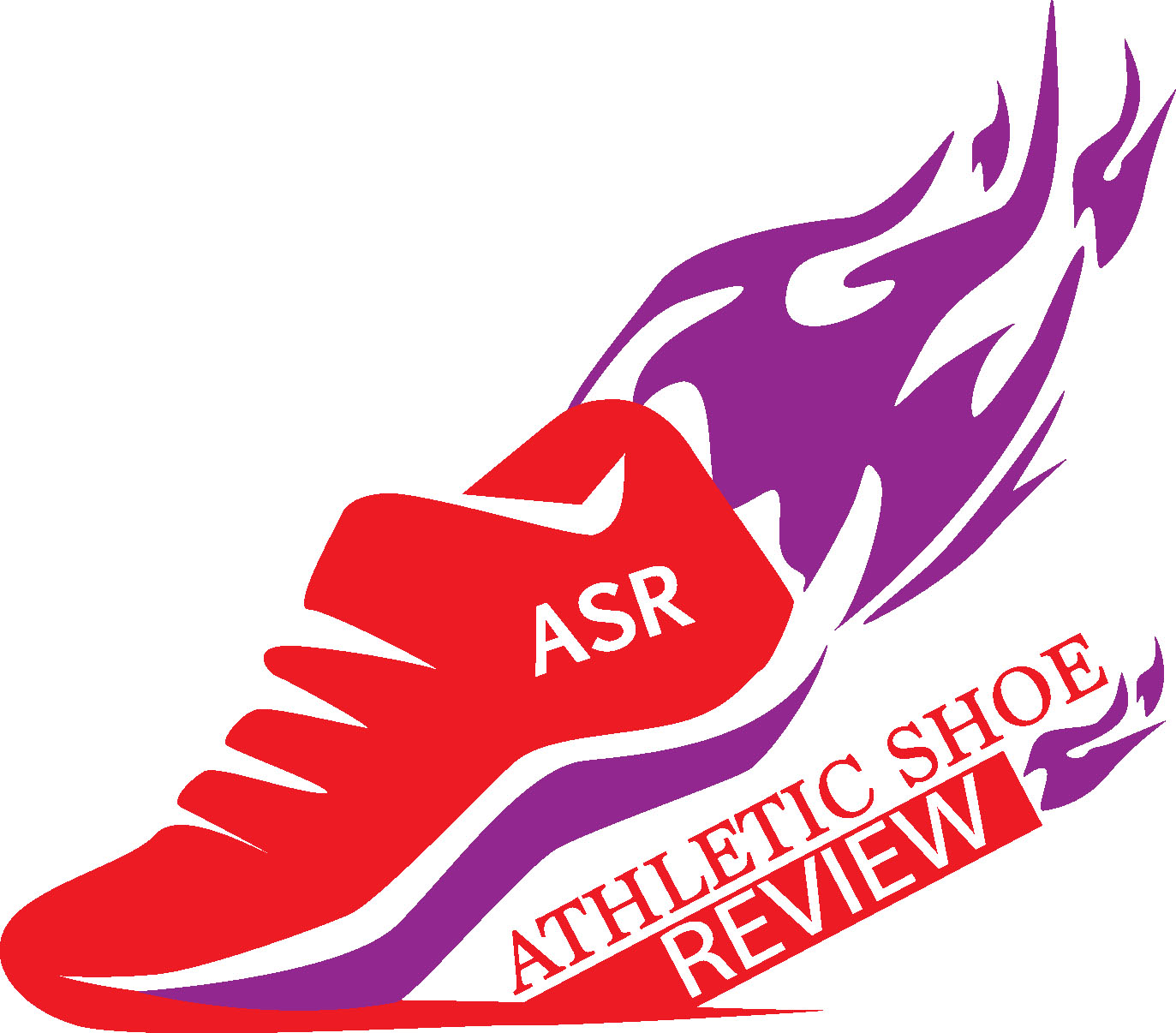

How to Buy Cross Country Shoes
If you run on a cross country team, it’s important that you have the right cross country shoes to protect your feet and increase your speed. Here are the features you should look for.
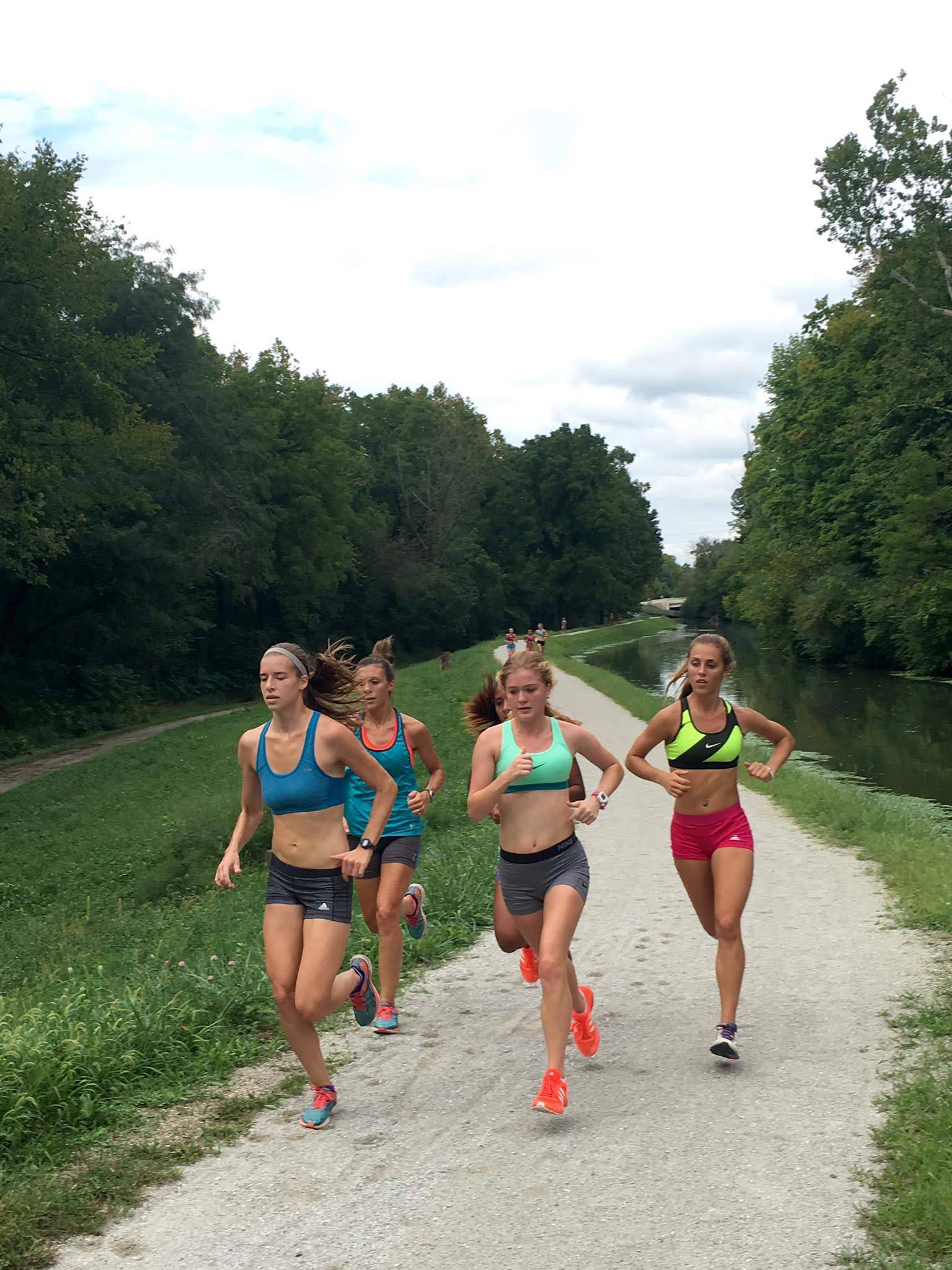
Trail vs. Road
Cross country races are usually run on golf courses or public parks, so the terrain may be uneven and have obstacle like tree roots and rocks. The best shoes for these surfaces are trail shoes.
However, if your cross country race takes place on a paved road or walkway, then it would be better to choose shoes made for road-running and urban environments.
The basic differences between trail and road running shoes is traction and the materials that comprise the shoes. If you’re running on the roads in your neighborhood or on a park trail, you don’t need much traction, so the treads on road running shoes are thinner. But the treads on trail shoes are thicker and more “aggressive” to prevent slipping as well as protect your feet from rugged terrain and obstacles.
Trail shoes have wider soles and the midsoles are denser. This gives you a feeling of being closer to the ground to provide stability and support on uneven surfaces, diminishing your chances of twisting an ankle. Road shoes usually have lightweight, softer midsoles.
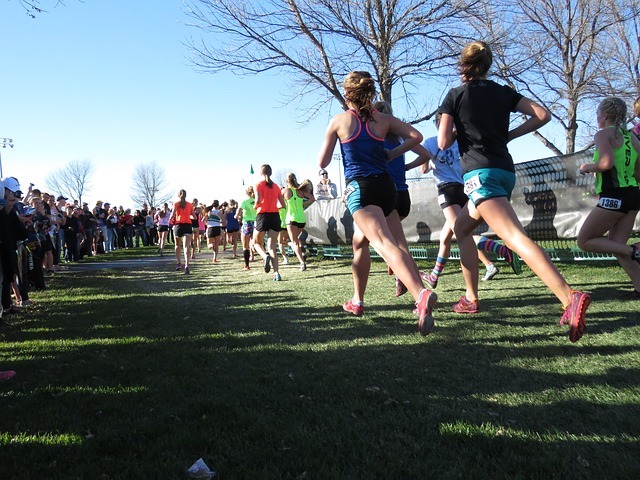
Trail shoes also provide more protection than road running shoes. They often feature toe bumpers to guard against stubbed toes, reinforced uppers to prevent sharp rocks or sticks from penetrating through the shoe and into your foot, and waterproof materials for those rainy and muddy cross country runs. They are made of durable fabrics that won’t fray or tear on abrasive surfaces.
Some trail shoes have a gusseted tongue, which means the tongue is attached around the base and sides to eliminate openings where debris or small rocks could enter the shoes. This helps guard against discomfort or even blistering that could result from friction against debris inside your shoes.
Keep in mind that denser materials, extra foot protection, and thicker tread patterns often result in a heavier shoe than a typical road running shoe.
Cross Country Shoe Features and Fit
Cross country shoes should be lightweight for speed, but with enough padding and cushioning to provide comfort for those long training runs.
Look for shoes that fit your level of pronation. Pronation is the natural way your foot moves from side to side when you walk or run. A normal foot rolls inward just a bit with each step you take. But if your feet roll in too much, you are an overpronator and the instep of your shoes may wear faster. If your foot doesn’t roll in enough, then you are an underpronator (also called a supinator). In this case, the outside edge of your shoes wears out first.
Most stores that sell running and cross country shoes will have gait analysis equipment that can help you determine your level of pronation, and sales associates who can match you with the best type of shoe for your needs. Stability shoes can help with pronation issues, or neutral shoes will work if they are most comfortable for you.
If you can’t get a gait analysis or you’re buying cross country shoes online, you can get some helpful information just by looking at your current shoes, especially if you run in them. Simply set them on a flat surface to see if they lean one way or the other. Then closely examine the soles to see where the tread is most worn and where the cushioning is most compressed.
If the shoes do not lean and the treads and cushioning materials are worn evenly, then you can look for neutral cross country shoes. If the shoes are worn or compressed on the extreme inside or outside of the foot, you may want to consider stability shoes.
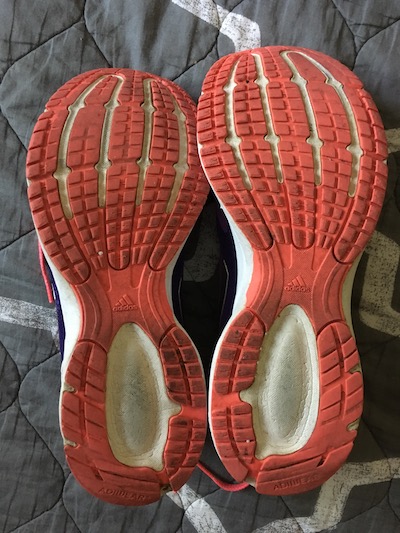 The outside edge of these shoe treads
The outside edge of these shoe treads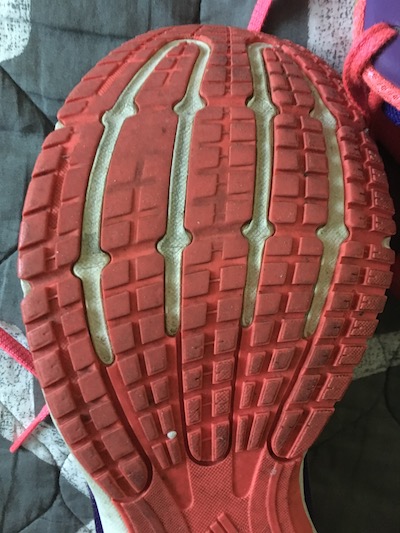 is more worn than the inside edge.
is more worn than the inside edge.The flexibility of the shoe is also important. It should bend naturally where your foot bends when you stride, but also remain rigid from the point where it bends all the way back to the heel. If it doesn’t flex in the right place, or it bends too much in other places, then it’s not the right shoe for cross country.
Try the shoes on after you run. Feet swell when you exercise, so you want to make sure your shoes can accommodate that spreading. Also make sure they feel comfortable right away when you put them on – no seams rubbing against your feet, not too tight or too loose. If you think there’s something slightly off, it’s not going to get better after you “break them in.” There really is no such thing as a break-in period.
You won’t get any fashion points for choosing your favorite color of cross country shoes. If the blue shoes fit better than the red ones, but red is your favorite color, which should you choose? Don’t say red! That’s right, you need to choose the ones that offer the most comfort and best fit, regardless of how they look. They’ll probably get muddy and full of grass stains anyway, so the color will change during the season!
Same goes for the brand you pick. Brand loyalty is not important here. If you normally like Nike, but the Brooks work better for you, then don’t hesitate to switch to the Brooks. You’re not under a shoe contract – if you are, then why are you reading this article? You should already know how to choose the right cross country shoes because you’re most likely a professional runner.
Trainers vs. Racers
If you’re a serious runner and you can afford it, you might even want to consider having two pairs of cross country shoes – one for training/practice, and one for actual races. When you train, you put in a lot of miles so you need a lot of cushioning and support in your shoes. But when you compete on race day, you want lightweight shoes to give you your best running time.
Also, racing shoes for cross country may feature interchangeable running spikes or rubber stubs for improved traction. You have to make sure your cross country league allows running spikes before you consider purchasing them. Spikes that are used in cross country shoes are longer than those used for other types of races. They work best on dirt, some grass courses, and wet ground. You should not use spikes in your cross country shoes if you’re running on pavement or rocky surfaces.
You should still follow the above guidelines for finding cross country shoes even for the ones that have running spikes or stubs.
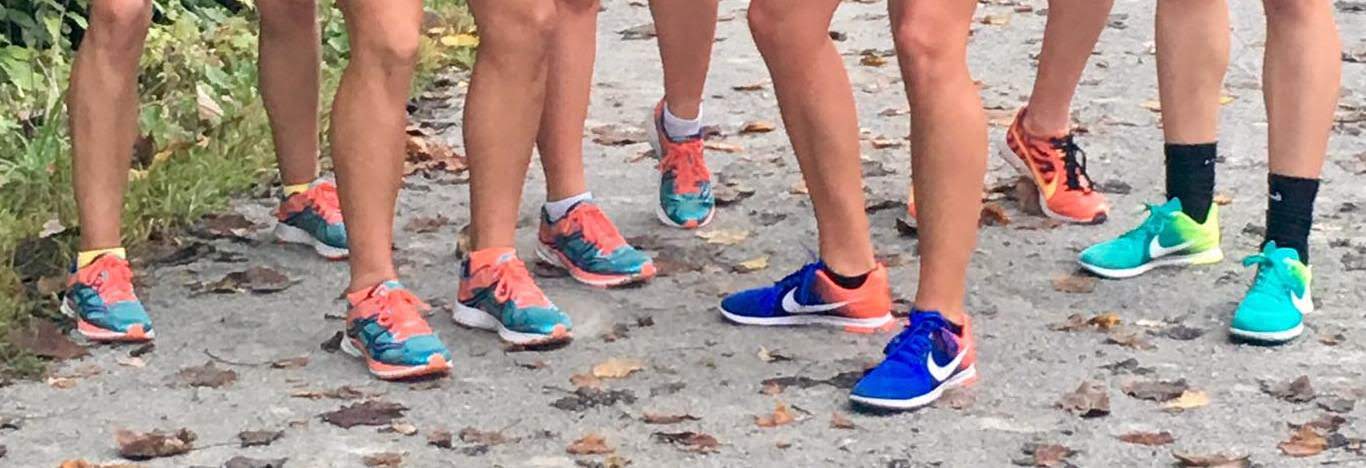
Summing It Up
Now that I’ve given you details about what to look for when buying cross country shoes, here’s a quick checklist to sum it all up:
- Determine what surface you’ll be running on so you know whether you need road or trail shoes.
- Find the right balance between cushioning and weight.
- Make sure the shoes are flexible in the right places.
- Choose function over fashion.
- Don’t worry about brand loyalty, but choose the shoes that work best for you.
- Consider having two pairs of cross country shoes – one for practice and one for race day.
- Determine if your league allows running spikes before considering them for improved traction.
Once you’ve chosen your proper cross country footwear, it’s up to you to race to victory.
Related: A Rundown of Running Shoes
